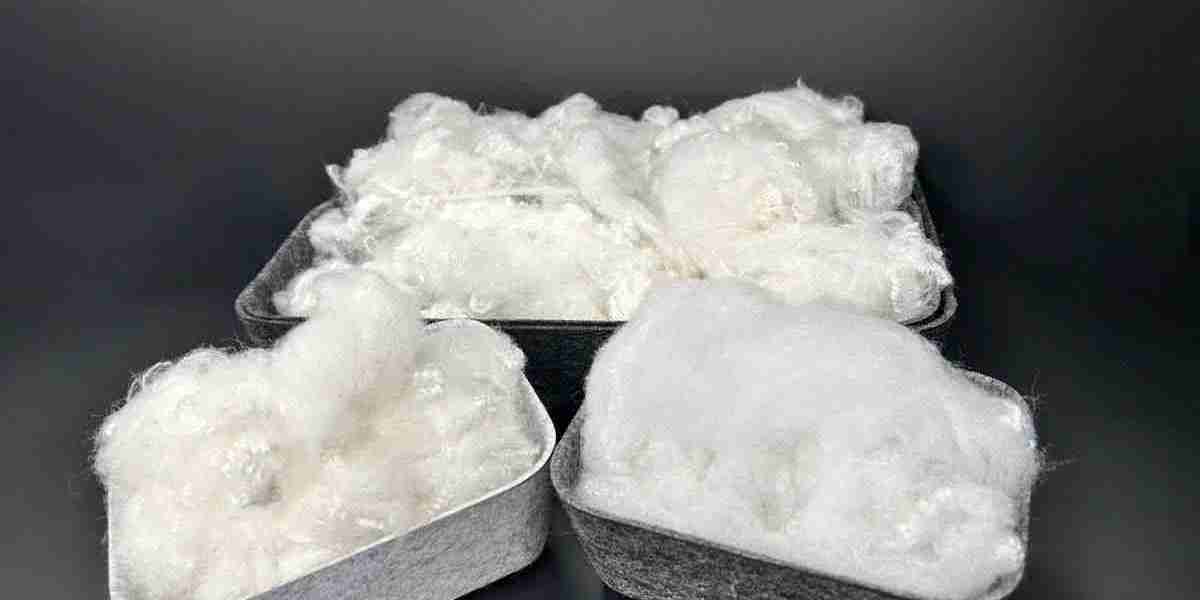Introduction
The North American staple fiber market is a key segment of the global fiber industry, driven by growing demand in various end-use industries, including textiles, automotive, healthcare, and nonwoven fabrics. With a robust manufacturing base, technological innovations, and a strong focus on sustainability, North America is witnessing significant developments in the staple fiber market. However, the market is also highly competitive, with several local and global players vying for market share. This article explores the competitive landscape of the staple fiber market in North America, focusing on key players, industry dynamics, trends, and challenges.
Key Players in the North American Staple Fiber Market
The North American staple fiber market is home to several prominent manufacturers, ranging from large multinational companies to regional players. These companies are involved in the production of both synthetic and natural fibers, catering to various industries such as textiles, nonwoven fabrics, automotive, and construction.
1. Invista
Invista, a subsidiary of Koch Industries, is one of the largest manufacturers of synthetic fibers in North America. Known for its high-quality polyester and nylon fibers, Invista supplies staple fibers for a variety of applications, including apparel, home textiles, and automotive components. The company’s strong focus on innovation and sustainability has positioned it as a key player in the market. Invista has also invested in sustainable fiber production technologies, such as the development of recycled fibers, to meet growing consumer demand for eco-friendly products.
2. DuPont de Nemours, Inc.
DuPont is a leading player in the global fiber market and has a strong presence in North America. The company produces a wide range of synthetic staple fibers, including polyester, nylon, and specialty fibers used in nonwoven fabrics, automotive, and industrial applications. DuPont has consistently focused on innovation, developing advanced materials with unique properties, such as durability, flame resistance, and moisture-wicking capabilities. Its commitment to sustainability, coupled with its extensive research and development (R&D) capabilities, allows DuPont to stay competitive in a dynamic market.
3. Eastman Chemical Company
Eastman Chemical Company is another significant player in the North American staple fiber market. Known for its expertise in the production of polyester fibers, Eastman offers a variety of staple fibers for use in textiles, nonwoven fabrics, and industrial applications. The company has been a leader in promoting sustainable practices, focusing on the production of recycled polyester fibers and bio-based fibers. Eastman’s innovations in sustainability and its investments in circular economy practices make it a major competitor in the growing market for eco-friendly fibers.
4. Toray Industries, Inc.
Toray Industries, a Japanese multinational, is a key player in the North American staple fiber market, particularly in the production of polyester and nylon fibers. The company supplies fibers for various applications, including textiles, automotive, medical, and industrial uses. Toray’s competitive advantage lies in its focus on high-performance fibers, such as heat-resistant and flame-retardant fibers, which cater to the automotive and aerospace industries. Additionally, Toray has been actively expanding its presence in North America through strategic partnerships and acquisitions.
5. BASF SE
BASF is a global chemical company that produces a wide range of fibers, including staple fibers used in textiles, nonwoven fabrics, and industrial applications. BASF is known for its innovation in sustainable fiber production, with a strong emphasis on biodegradable and recycled fibers. The company has also developed specialty fibers with enhanced properties for specific applications, such as automotive interiors and filtration materials. BASF’s commitment to sustainability and continuous innovation helps it maintain a competitive edge in the North American market.
Industry Trends Influencing Competition
1. Sustainability and Eco-Friendly Products
Sustainability is a dominant trend shaping the competitive landscape of the staple fiber market in North America. Consumers and manufacturers alike are increasingly focused on reducing their environmental footprint, leading to a rise in demand for eco-friendly fibers, including recycled polyester, bio-based fibers, and natural fibers like organic cotton. Companies in the region are heavily investing in sustainable production technologies, such as closed-loop recycling systems and the development of biodegradable fibers, to meet these demands.
The push for sustainability has prompted key players like Invista, DuPont, and Eastman Chemical to diversify their product offerings and focus on environmentally responsible production practices. This trend is driving competition as companies vie to lead the market in sustainability efforts.
2. Technological Innovations
Innovation in fiber production technologies is another important factor driving competition in the North American staple fiber market. Manufacturers are investing in research and development to create high-performance fibers with enhanced properties, such as moisture-wicking, flame resistance, and improved durability. These fibers are increasingly used in specialized applications, including automotive components, medical textiles, and industrial materials.
The rise of smart textiles—fibers embedded with electronics, sensors, and conductive materials—is also generating interest in the market. Companies are focusing on developing these advanced materials to cater to emerging sectors like wearable electronics and healthcare applications, creating new competitive dynamics in the industry.
3. Automation and Smart Manufacturing
Automation and smart manufacturing technologies are reshaping the staple fiber production process, leading to increased efficiency, lower costs, and enhanced product quality. Companies in North America are adopting advanced technologies, such as robotics, artificial intelligence, and the Internet of Things (IoT), to optimize production lines, reduce waste, and improve traceability.
Manufacturers who invest in these technologies gain a competitive advantage by enhancing their operational capabilities and meeting the growing demand for high-quality, cost-effective staple fibers. This trend has intensified competition among key players in the region.
4. Shifts in Consumer Preferences
Changing consumer preferences are influencing the types of staple fibers demanded in the North American market. The growing popularity of sustainable and ethically sourced products is pushing companies to focus on the production of fibers made from recycled materials, organic sources, and plant-based alternatives. As consumers become more aware of the environmental and social impacts of their purchases, companies that can offer transparency and sustainability are more likely to gain market share.
5. Global Supply Chain Challenges
The staple fiber market in North America is also impacted by global supply chain challenges. The COVID-19 pandemic exposed vulnerabilities in the global supply chain, leading to shortages of raw materials and disruptions in production. These challenges have spurred companies to consider localizing production and establishing more resilient supply chains. Companies that can adapt to supply chain disruptions by ensuring a steady flow of raw materials will have a competitive advantage in the North American market.
Challenges Facing Competitors
Despite the strong growth prospects, the North American staple fiber market faces several challenges:
Raw Material Price Fluctuations: The prices of raw materials, particularly for synthetic fibers like polyester, are subject to fluctuations in petrochemical prices. This volatility can impact the profitability of staple fiber manufacturers and create pricing pressures in the market.
Environmental Regulations: Stricter environmental regulations on fiber production, waste management, and recycling processes are putting pressure on manufacturers to adopt sustainable practices. Compliance with these regulations often requires significant investments in technology and infrastructure.
Global Competition: The North American market is facing increasing competition from international players, particularly from Asia-Pacific, where production costs are lower. This competition can lead to price pressures and challenges in maintaining market share.
Conclusion
The competitive landscape of the staple fiber market in North America is shaped by a combination of industry giants, technological advancements, sustainability trends, and consumer preferences. Companies like Invista, DuPont, Eastman Chemical, and Toray Industries are leading the market with innovative products and sustainable practices. However, challenges such as raw material price volatility, global competition, and environmental regulations are forcing companies to continuously adapt to stay competitive.
As the demand for sustainable, high-performance fibers continues to grow, manufacturers in North America will need to invest in innovation, optimize production processes, and prioritize eco-friendly solutions to maintain their competitive edge in the evolving market.


![NBA 2K25 Ratings: Jokić Tops with a 97 [Reactions]](https://pungi.b-cdn.net/upload/photos/2024/10/T8zcTcbFQqlDPbWAxR9Q_02_f980d84c40b7bf33d81d254268ff6f05_image.png)

